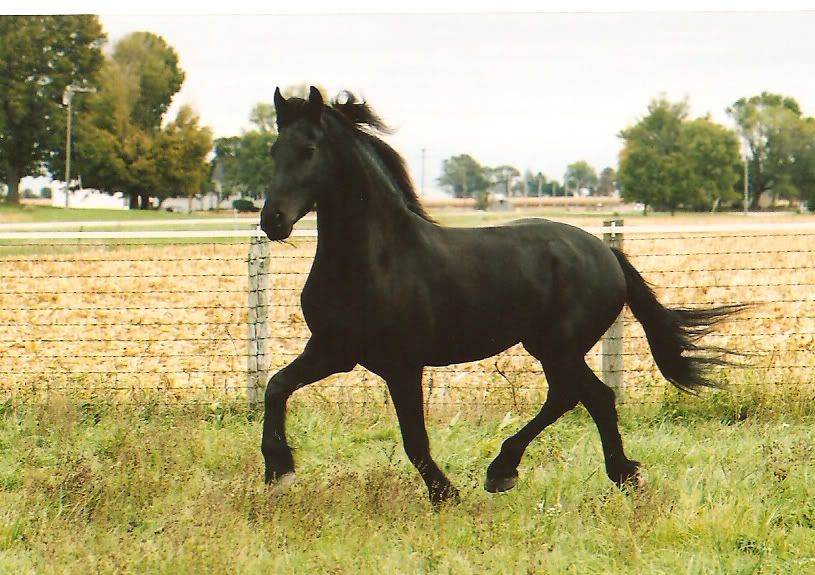Post by Mary Ann on Jul 15, 2011 13:01:41 GMT -5
First, yum. Nothing like it. Yum. 
Okay, so Snaffle says we need to discuss how to make butter. There are a gazillion ways. But first you have to know that it's pretty freaking hard to do with pasteurized/homogenized stuff; that processing makes the little tiny globules of butterfat even smaller. And if the carton says Ultrapasteurized, well, forget it. You can churn all day and it'll never be butter.
But if you have access to a cow or a source of raw milk or raw cream, here's how it's done.
All churning is simply agitating the cream so that the butterfat globules in the cream knock together and cling. You can churn in a traditional churn, with a wooden paddle that chunks up and down, but that's tiring and you need a lot of cream to make it worthwhile. Or you can put it in a jar and fill about halfway, and let a couple of kids roll it on the floor until it separates. Hand crank churns are pretty, but they're tiring to run, and they're expensive. Ditto the electric ones.
Another option is to use an electric mixer. I use my KitchenAid mixer with the balloon wire whisk. Some people want cultured butter, but I like it sweet. And some people like to set it on the counter for awhile first, but I don't; I take it straight from the fridge, dump the whole thing in the bowl of the mixer, and go. It takes a bit of time; you increase the speed to as high as you can go without spattering your kitchen. It goes from thick (THICK, believe me!) liquid to soft peak, to stiff peak, and then a chunky sort of whip before the buttermilk separates.
Watch it verrrrry closely here and turn the speed down a little; it's beginning to break. Suddenly you'll have lots of small butter crumbs and the buttermilk will begin to be squeezed out. Now slow your mixer down a LOT or you'll spray your kitchen, and work it just a wee bit longer. When you have large globs of butter and very separate buttermilk, stop your mixer.
Go to the sink and pour off the buttermilk. (I save it for the chickens; they love it!) Run the cold water tap until it's quite cold and fill the bowl and rinse the butter, pouring off the water. Then fill the bowl most of the way and leave that water with the butter to keep it from getting too warm.
Under a slowly streaming cold water stream, take a bit of the butter and work it. Sort of knead it like you would dough, folding, folding, working deftly to keep from warming it too much with your hands, as the cold water runs over it. This rinses away bits of buttermilk that remain. Then take it out of the water stream and give it a few kneads and shakes to get rid of as much of the water as you can, and pack it into containers.
In the summer I find this works the best; but in the winter the cold water hurts my hands so I use a flat rubber scraper for some of it, or a butter paddle. I run the water into a bowl and work it with the paddle on the side of the bowl and let the water run to the bottom. Then you can scoop it up and put it in your containers.
Salt it or not, your preference.
I got some Ziploc plastic containers that are about the size of my round antique butter dish and I load the butter into those. When it's frozen I knock them out and wrap the chunks in freezer paper. Then I refill the containers for more freezing. I suppose I could eventually use the containers to keep the butter when it's in use, too....
Why make your own butter? Because it's much fresher than anything in the grocery. Because if you know the producer you can find out for sure if the cow was given any rGBH, a growth hormone that increases production and is highly prevalent in the dairy industry. You can also find out if the cows have had access to pasture. Technically organic butter from the store comes from cows with access to pasture; but it's just access, not consumption. Eating fresh grass changes the fatty acid profile in dairy products from a heart harming one to a heart healthy one. You want them to get as much pasture as possible. The butter turns very yellow, rich in beta carotene. Commercial butter is often dyed this color with annatto.
I'm stockpiling summer butter in the freezer now. I hope to get enough to last us until the next flush of spring grass.
It's soooo delicious! I hope this helps.

Okay, so Snaffle says we need to discuss how to make butter. There are a gazillion ways. But first you have to know that it's pretty freaking hard to do with pasteurized/homogenized stuff; that processing makes the little tiny globules of butterfat even smaller. And if the carton says Ultrapasteurized, well, forget it. You can churn all day and it'll never be butter.
But if you have access to a cow or a source of raw milk or raw cream, here's how it's done.
All churning is simply agitating the cream so that the butterfat globules in the cream knock together and cling. You can churn in a traditional churn, with a wooden paddle that chunks up and down, but that's tiring and you need a lot of cream to make it worthwhile. Or you can put it in a jar and fill about halfway, and let a couple of kids roll it on the floor until it separates. Hand crank churns are pretty, but they're tiring to run, and they're expensive. Ditto the electric ones.
Another option is to use an electric mixer. I use my KitchenAid mixer with the balloon wire whisk. Some people want cultured butter, but I like it sweet. And some people like to set it on the counter for awhile first, but I don't; I take it straight from the fridge, dump the whole thing in the bowl of the mixer, and go. It takes a bit of time; you increase the speed to as high as you can go without spattering your kitchen. It goes from thick (THICK, believe me!) liquid to soft peak, to stiff peak, and then a chunky sort of whip before the buttermilk separates.
Watch it verrrrry closely here and turn the speed down a little; it's beginning to break. Suddenly you'll have lots of small butter crumbs and the buttermilk will begin to be squeezed out. Now slow your mixer down a LOT or you'll spray your kitchen, and work it just a wee bit longer. When you have large globs of butter and very separate buttermilk, stop your mixer.
Go to the sink and pour off the buttermilk. (I save it for the chickens; they love it!) Run the cold water tap until it's quite cold and fill the bowl and rinse the butter, pouring off the water. Then fill the bowl most of the way and leave that water with the butter to keep it from getting too warm.
Under a slowly streaming cold water stream, take a bit of the butter and work it. Sort of knead it like you would dough, folding, folding, working deftly to keep from warming it too much with your hands, as the cold water runs over it. This rinses away bits of buttermilk that remain. Then take it out of the water stream and give it a few kneads and shakes to get rid of as much of the water as you can, and pack it into containers.
In the summer I find this works the best; but in the winter the cold water hurts my hands so I use a flat rubber scraper for some of it, or a butter paddle. I run the water into a bowl and work it with the paddle on the side of the bowl and let the water run to the bottom. Then you can scoop it up and put it in your containers.
Salt it or not, your preference.
I got some Ziploc plastic containers that are about the size of my round antique butter dish and I load the butter into those. When it's frozen I knock them out and wrap the chunks in freezer paper. Then I refill the containers for more freezing. I suppose I could eventually use the containers to keep the butter when it's in use, too....
Why make your own butter? Because it's much fresher than anything in the grocery. Because if you know the producer you can find out for sure if the cow was given any rGBH, a growth hormone that increases production and is highly prevalent in the dairy industry. You can also find out if the cows have had access to pasture. Technically organic butter from the store comes from cows with access to pasture; but it's just access, not consumption. Eating fresh grass changes the fatty acid profile in dairy products from a heart harming one to a heart healthy one. You want them to get as much pasture as possible. The butter turns very yellow, rich in beta carotene. Commercial butter is often dyed this color with annatto.
I'm stockpiling summer butter in the freezer now. I hope to get enough to last us until the next flush of spring grass.

It's soooo delicious! I hope this helps.





